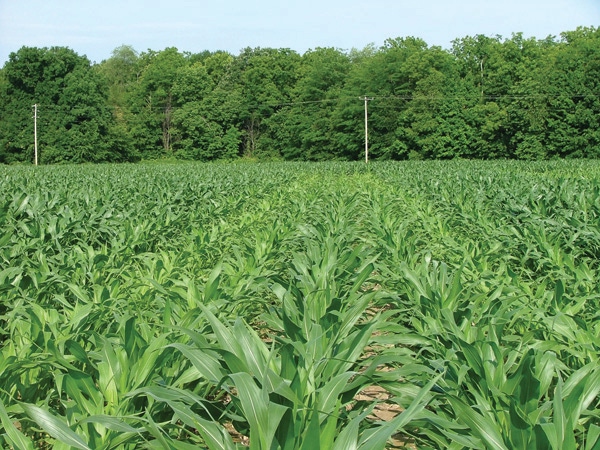March 11, 2013

Every year, corn growers face the challenge of applying the optimum amount of nitrogen (N) in the right place at the right time to maximize corn production and minimize nutrient loss. Soil and weather conditions can sometimes interfere with applying N at the right time.
“There is an opportunity cost if a grower is applying anhydrous in the spring,” says Alan Blaylock, the Denver-based agronomy manager for Agrium Advanced Technology (AAT). “If the application is delayed due to wet soils, the delay in planting time can make a huge yield difference.”
Smart nitrogen
AAT designed ESN Smart Nitrogen, a controlled-release, polymer-coated urea fertilizer to protect N from leaching and supply it to the crop as needed.
“Using ESN means a wider application window,” Blaylock says. “The N is protected if farmers apply ESN from one to two months before planting in cold soil. It can be broadcast after planting and used as an early topdress. Because the N is protected, timing is much more flexible.”
In January, ESN was estimated to cost $750 and urea $600 per ton. While ESN may cost more, Blaylock says the typical yield increases, flexibility in application timing and overall value provide a very nice return on that investment.
“We see that in conditions conducive to N loss, the typical yield increase may be 15 to 20 bu./acre versus conventional urea,” Blaylock says.
Research on sandy soils
Richard Ferguson, University of Nebraska professor of agronomy and horticulture, is doing research on sandy soils in the Central Platte Valley using products like ESN and urea ammonium nitrate (UAN). “The risk of N loss is very high on sandy soils,” he says.
Over the 2009, 2010 and 2011 seasons in Nebraska, “there was significant loss with UAN, but not with ESN in our studies,” he continues.
“In a year of significant yield reduction, we saw a difference of between 60 and 80 bu./acre,” Ferguson concludes.
Comparing various combinations of ESN and urea at different spring and summer application times is part of the work led by Kurt Steinke, assistant professor of soil and nutrient management at Michigan State University.
“Fertilizer prices have varied widely in the past five years,” Steinke says. “Growers are taking a second look at what they apply and how much, in what form. It can vary by soil and topography. ESN may potentially decrease leaching into the ground water and volatilization of ammonia into the air.”
“In coarse-textured soils, we want to reduce the amount of N that leaches and keep the N available for the plant,” Steinke says. “On slopes or in depressions, we want the N to stay where we put it.”
About the Author(s)
You May Also Like




